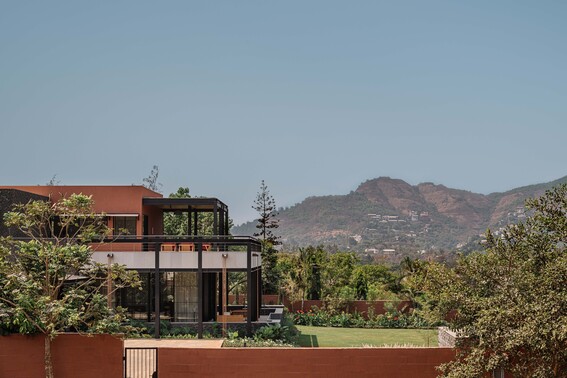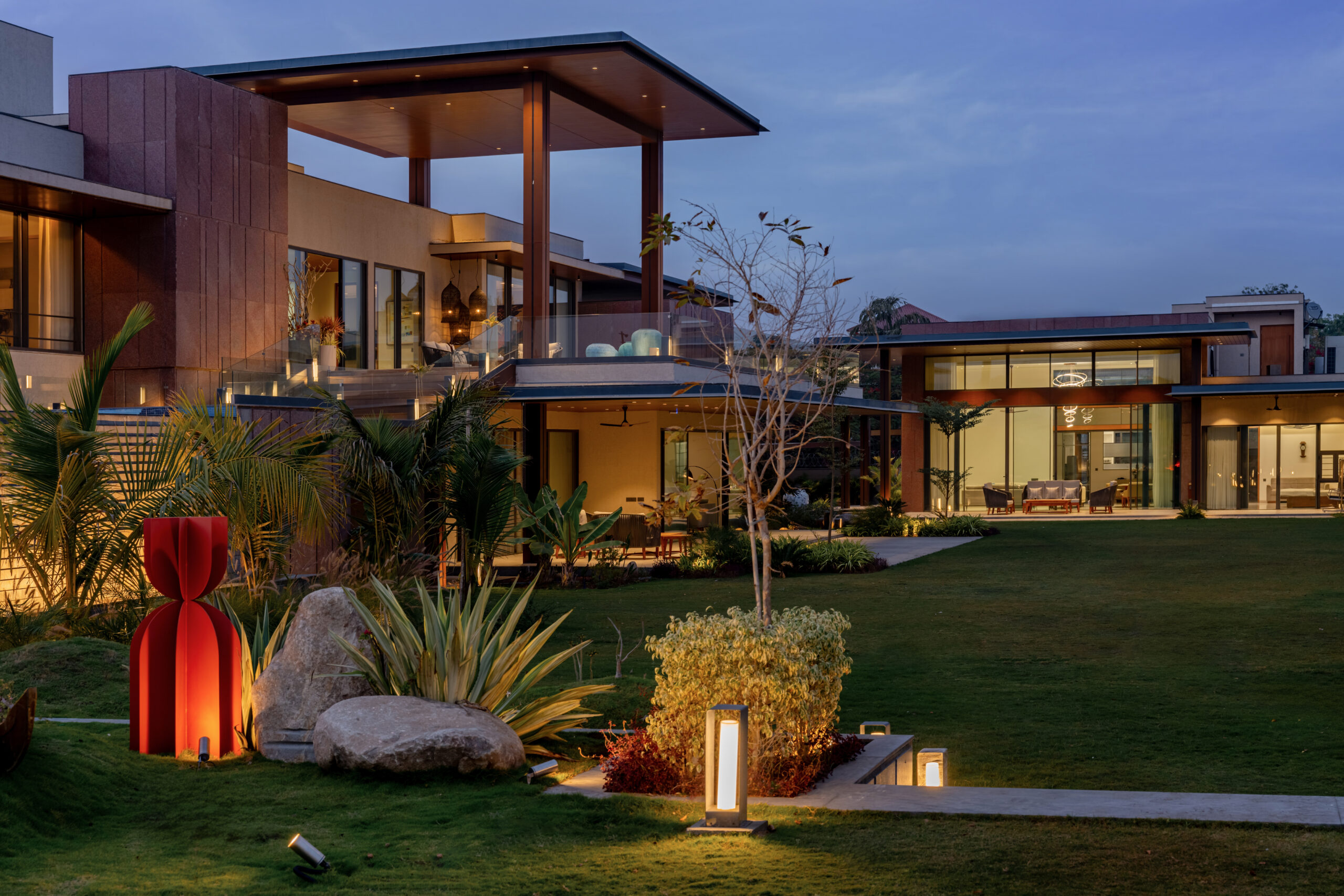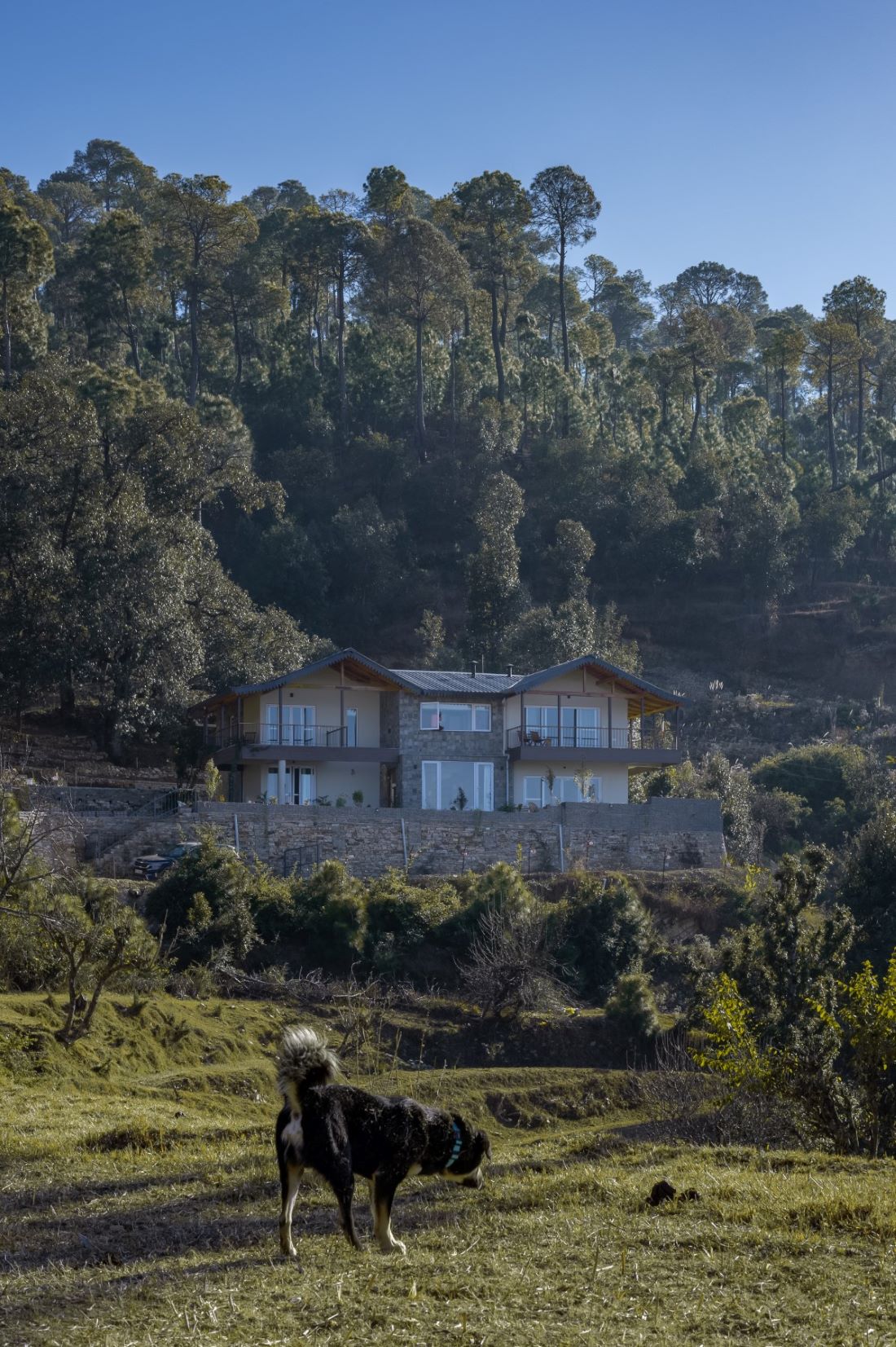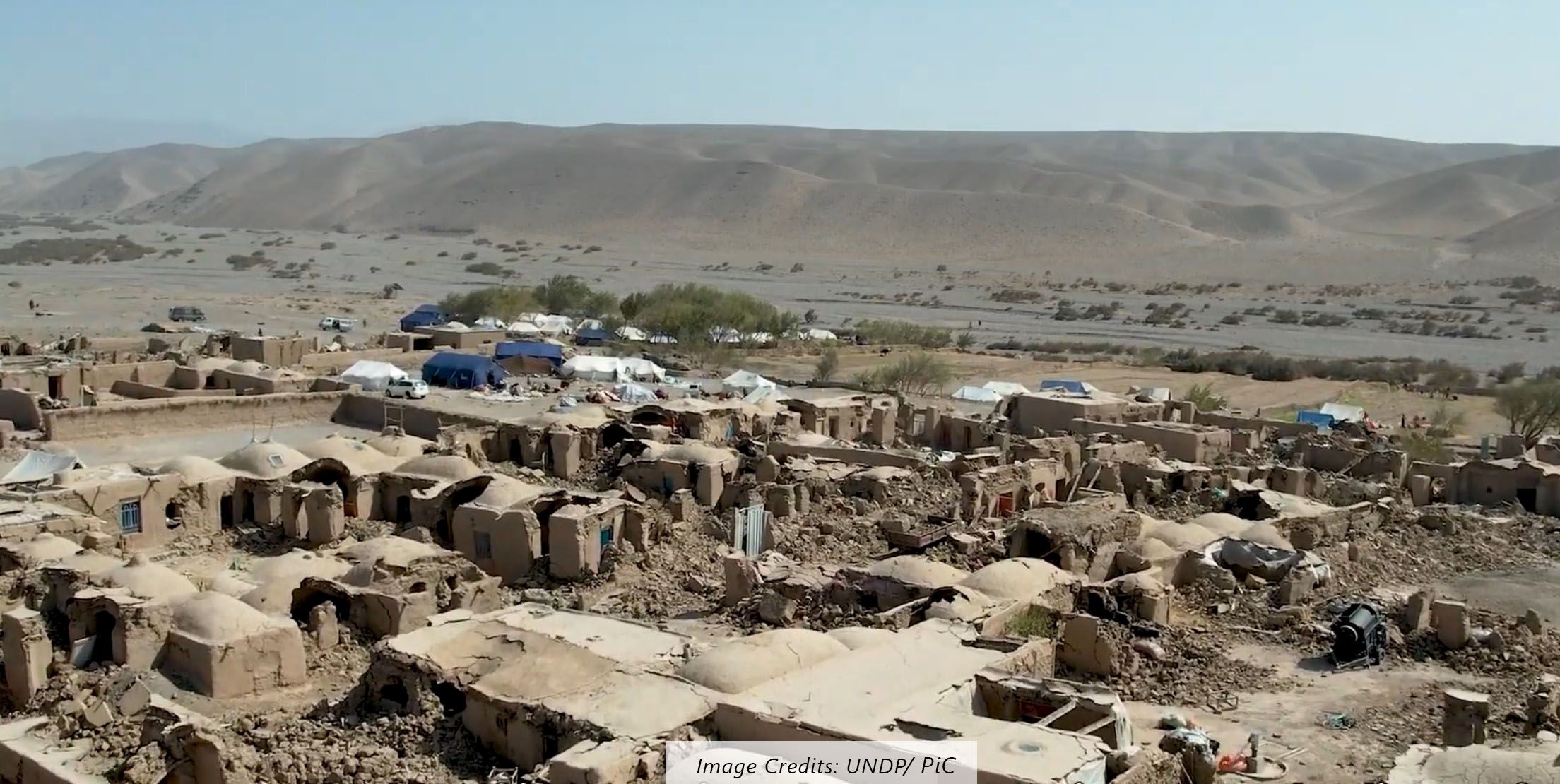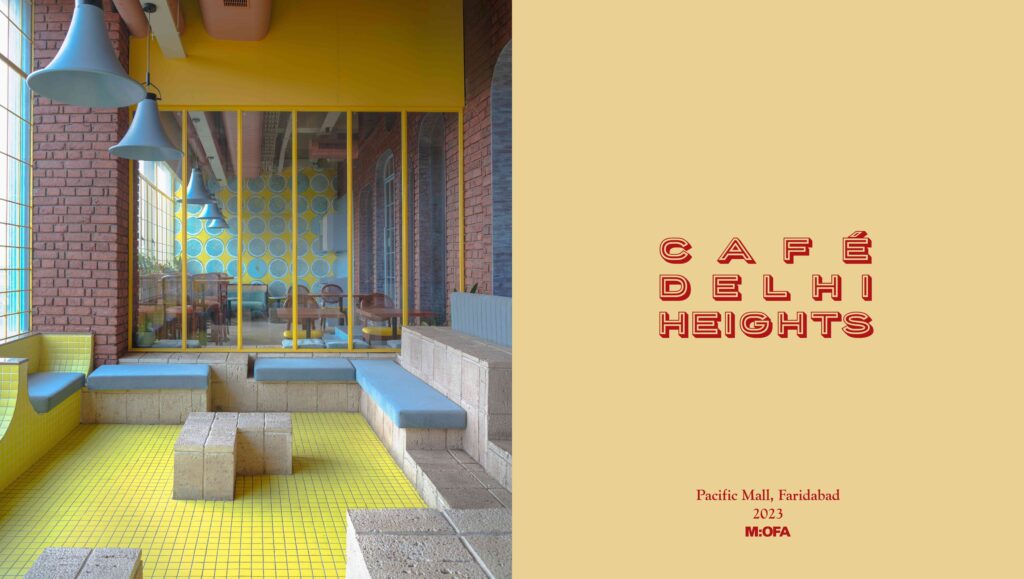
Thought
In today’s hyperconnected, social media-driven world, visiting a café is no more just about dining. With food now accessible from the comfort of one’s couch through a simple swipe on a phone screen, the ‘café experience’ needs to be thoughtfully curated to satisfy the human need for social connection. These moments of connection are also inevitably captured as memories for social media, a phenomenon that has democratized opportunities for gaining recognition—once reserved solely for the realms of cinema or art. As a result, cafés now prioritize creating the perfect ambiance for selfies and the subsequent social media tags.
The brief aimed to create a quirky, fun and inviting space that resonates with people of all ages. This vision encompassed a setting where different generations—whether a group of teenagers capturing photos for Instagram, a family enjoying a relaxed afternoon, or an older couple reminiscing over coffee—could feel comfortable and connected, leaving with countless memories of their time at the café. The overarching goal was to craft a timeless backdrop, with each corner thoughtfully curated to offer guests the opportunity to capture moments that feel both candid and intentional.
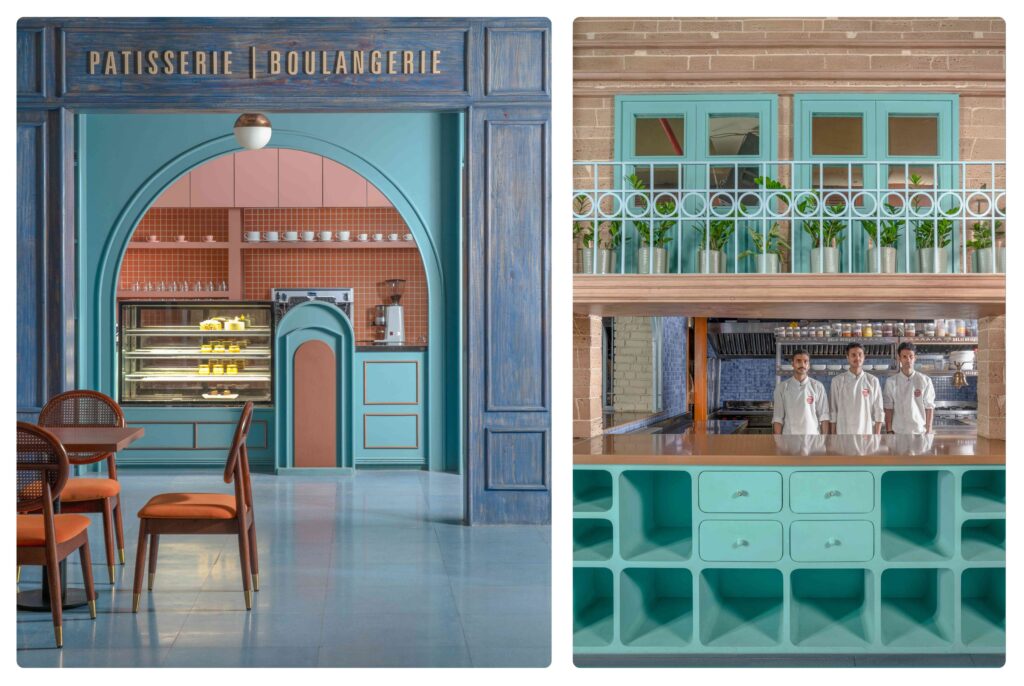
Idea
Designed as a social experiment, this café serves as a broad canvas to facilitate experiences that go beyond the mundane, offering larger-than-life settings for anyone aspiring to stardom in a generation full of social media influencers.
Like a satirical movie set, the concept aims to provide multiple vantage points featuring backdrops perfect for picture-postcard selfies and glamorous vlogs. Every guest in this space thus becomes a potential character in their own story, set against the carefully crafted, kitschy canvas of Café Delhi Heights, Faridabad, Delhi.
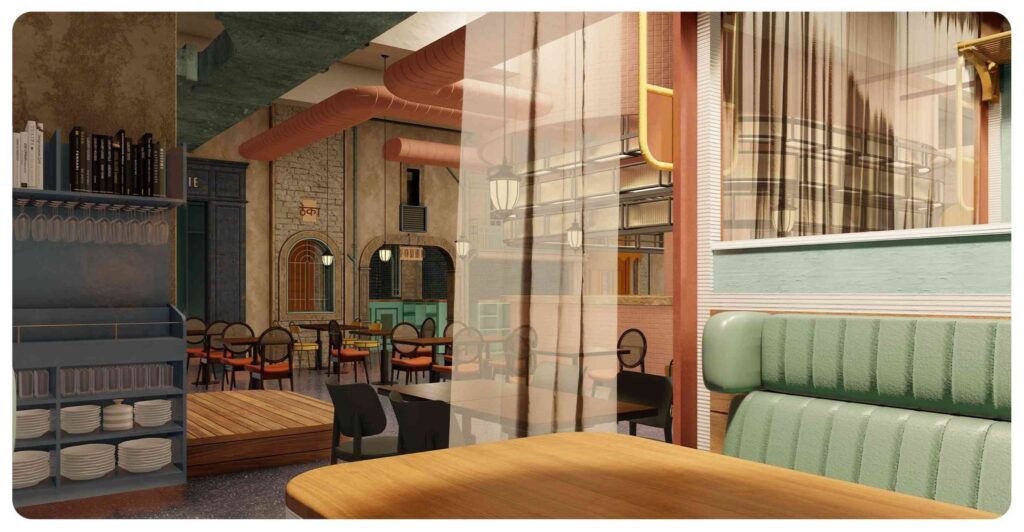
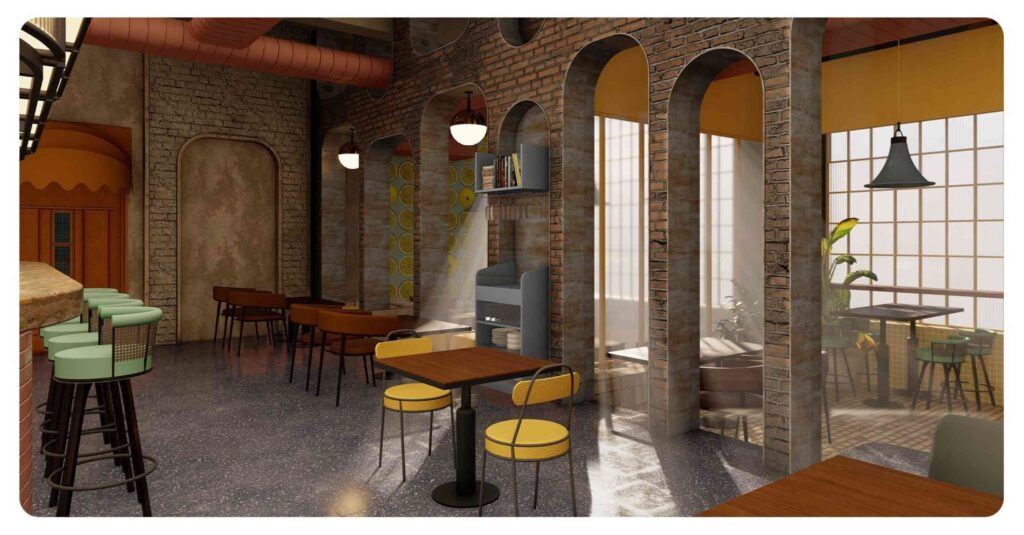
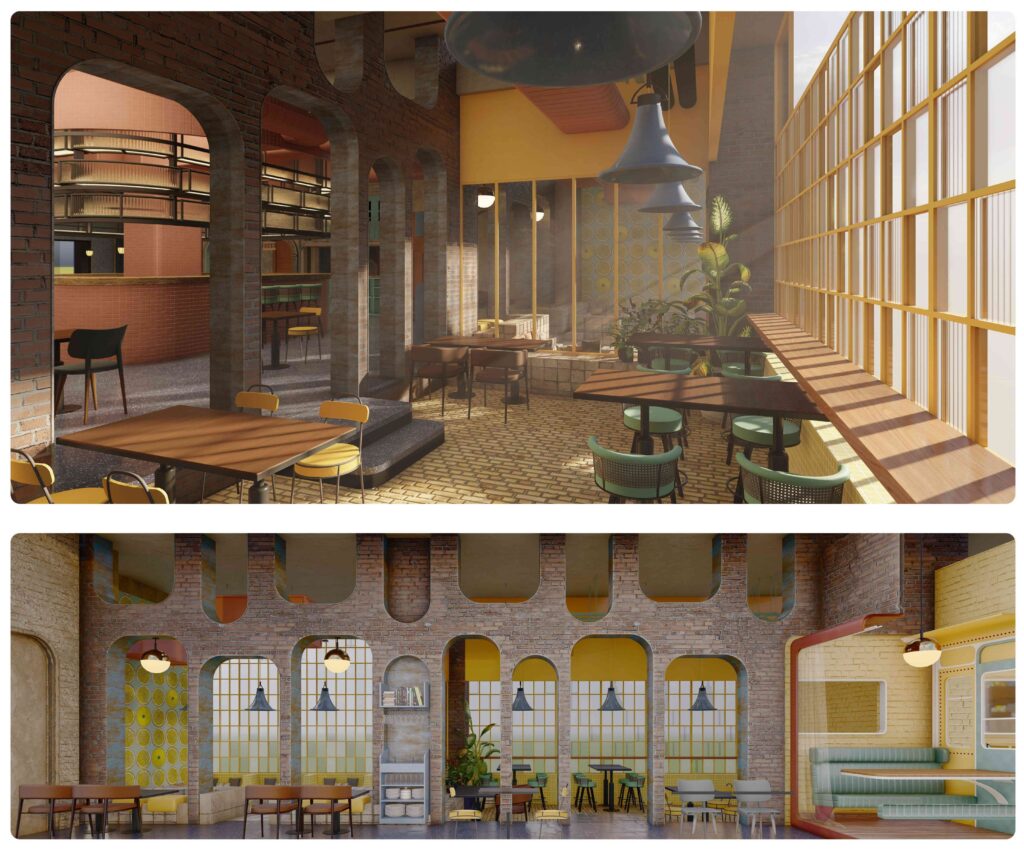
Design process
The design process drew inspiration from the settings of various Wes Anderson films, known for their distinctive, off-beat style, characterized by perfectly curated and colorful visuals. At the same time, contextual references were gathered from the local surroundings of the café, spanning a broad spectrum of space and time.
Architectural and lifestyle elements from the medieval parts of Delhi and Faridabad were layered with colour palettes inspired by similarly themed films from the Anderson universe. This juxtaposition was achieved using AI tools, intermixing a curated collection of images from both the real world and the movies. This surreal mash-up underwent several iterations as a continuous feedback loop through the AI-driven software, resulting in images that served as mood boards for translating into a cohesive design for the café.
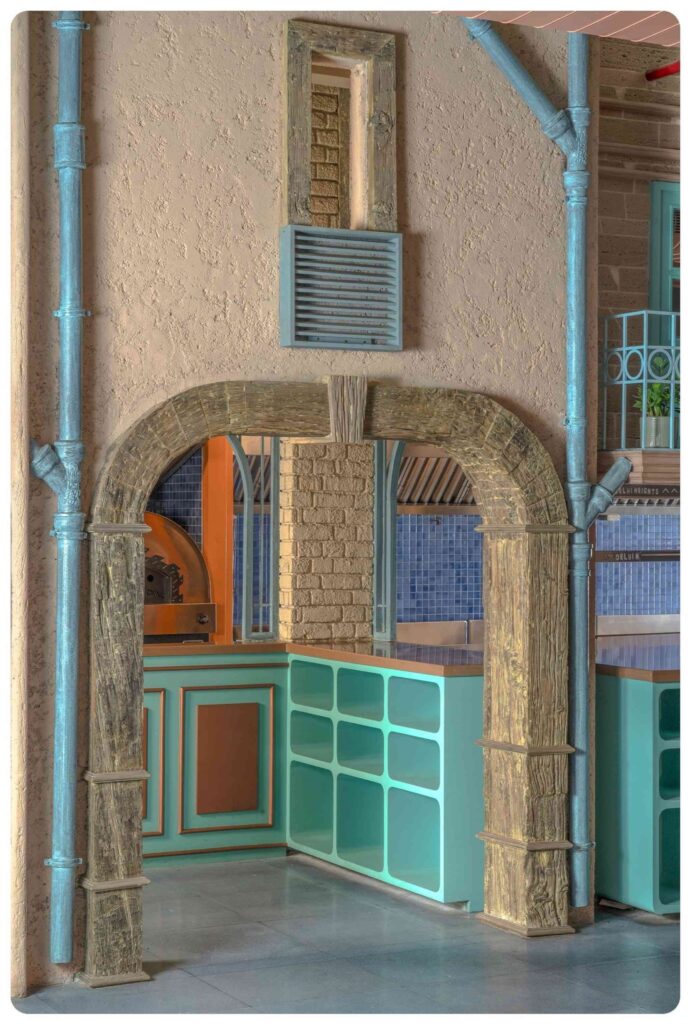
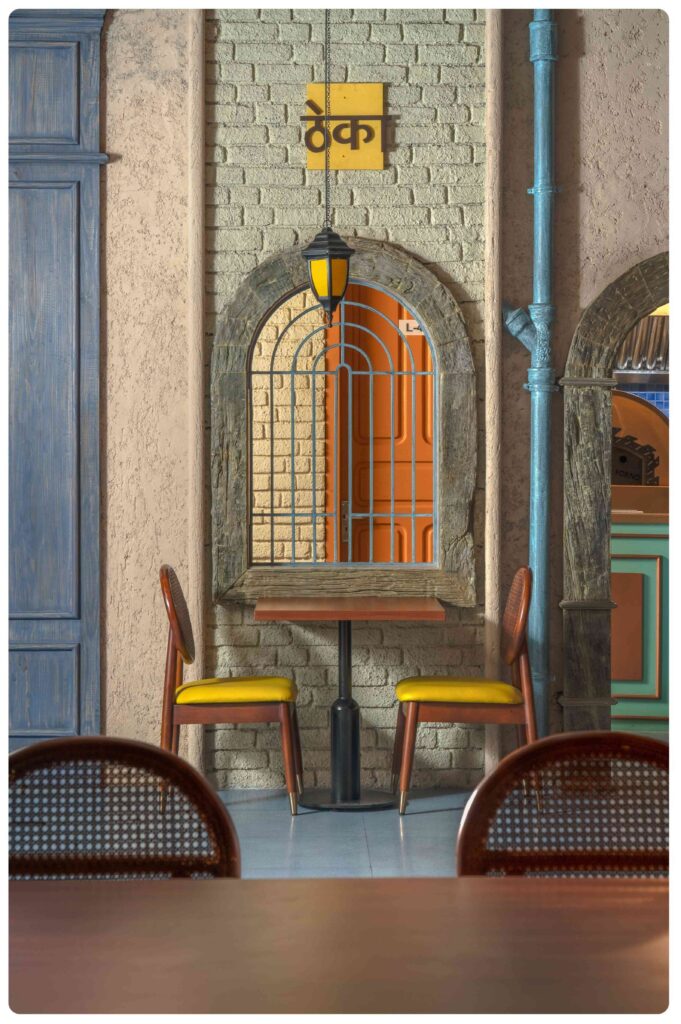
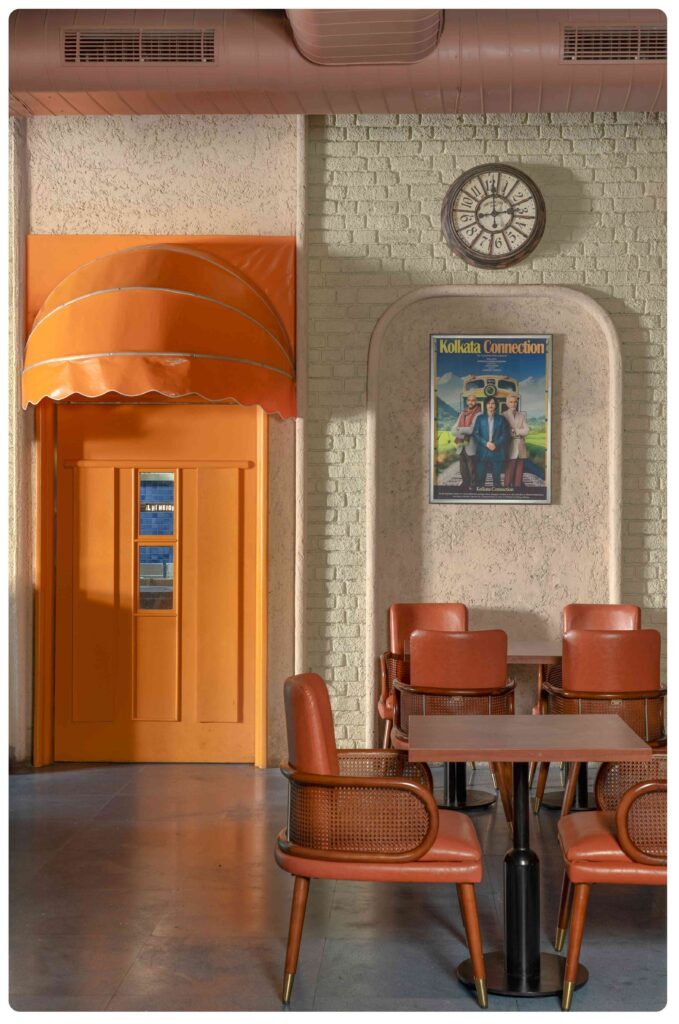
Interpretation
The design of the café is a thoughtful exploration of space, built on a square site that is divided into three distinct segments, each forming a unique edge of the square. The fourth edge serves as a viewing area, ensuring that all elements are interconnected and centred around a focal point that not only acts as a showstopper but also offers a 360-degree view of the diverse backdrops. This arrangement of multiple narrative spaces under one roof amplifies the sense of immersion, mirroring Anderson’s storytelling method, where every set tells a story and invites exploration.
- The first segment, the Indian Dispatch Wall, draws inspiration from the rich cultural tapestries of Old Delhi and Faridabad, while also paying homage to the visual language of The French Dispatch.
- The second segment features train wagon booth seating, evoking the nostalgia of Indian Railways and the historic local trains that once connected Delhi and Faridabad, with an additional nod to The Darjeeling Limited.
- The third segment presents a low seating area inspired by Surajkund, reflecting the playfulness and pastel aesthetics of Asteroid City.
- Finally, at the heart of the café lies the pink bar, designed as a striking 360-degree centrepiece reminiscent of the aesthetic of The Grand Budapest Hotel, acting as a metaphorical chandelier that ties the various spaces together while creating a vibrant atmosphere.
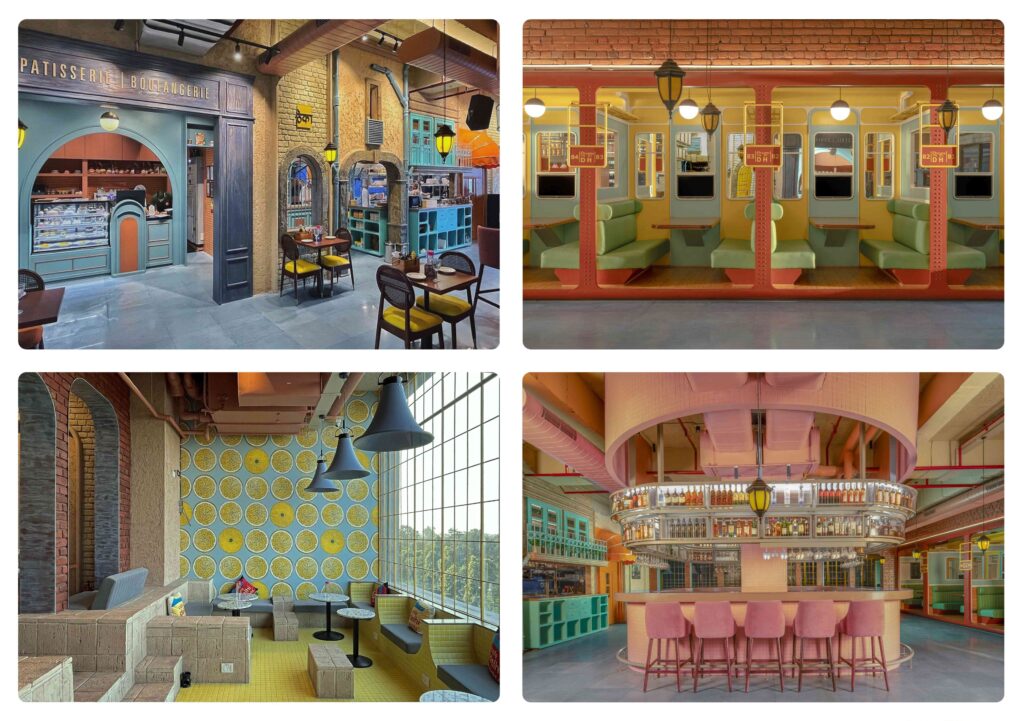
INDIAN DISPATCH WALL
Context: Old Delhi’s Bazaars; Movie: The French Dispatch.
The Indian Dispatch wall brings together the charm of Delhi’s street culture and the quirky, symmetrical aesthetics characteristic of Wes Anderson’s films. Taking cues from The French Dispatch, this wall mirrors the whimsical and meticulously curated portrayal of mid-century Paris but with a distinctly Indian twist. It weaves together the lively spirit of Old Delhi’s bazaars and the intricate facades that line its streets.
Arched doorways and eclectic signages give guests a sense of stepping into a vintage Delhi street. The thoughtfully mismatched colours and textures mimic the layers of a bustling market. The arrangement and colour palette evoke the pastel, nostalgic tones of Anderson’s cinematography, while the styling remains deeply rooted in the sights of Old Delhi.
As guests approach, they’re pulled into a scene that feels like it belongs in a movie—each arch and sign guides them through a new layer of the space. The design doesn’t just reimagine Delhi through Anderson’s cinematic lens; it reinterprets his visual storytelling language to pay homage to India’s streets, where every corner is a story waiting to be told. The wall creates a vibrant narrative that merges Indian streetscape with cinematic flair, resulting in a space where cultural nostalgia meets visual whimsy.
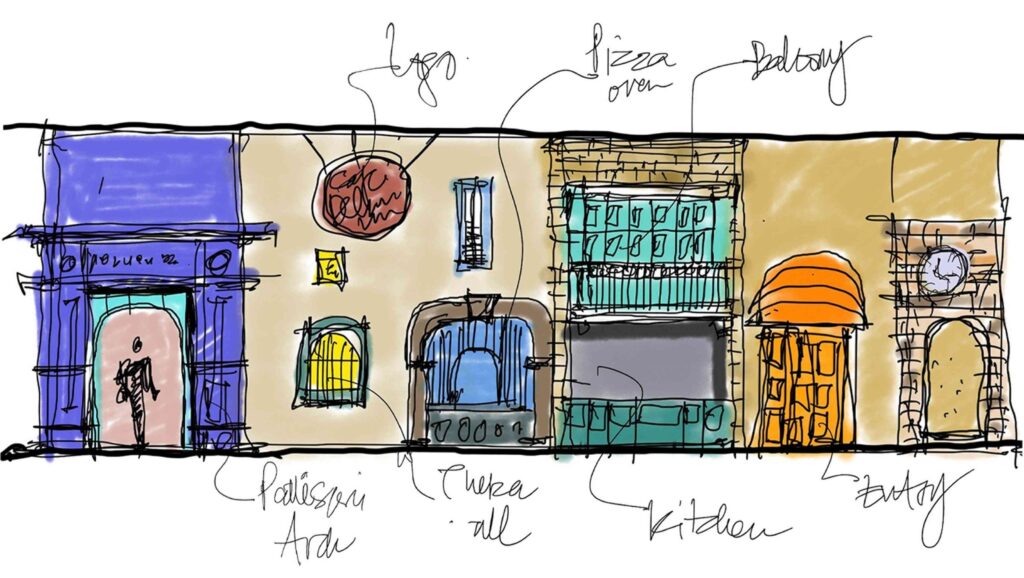

TRAIN WAGON
Context: Indian Railways; Movie: The Darjeeling Limited.
Café Delhi Heights is known for its cozy booth seating, a signature element that they have reinterpreted uniquely in all of their outlets. For this one, we crafted the booths to resemble first-class compartments of a railway wagon, with an open front like a scene from a movie set, capturing the magic of travel in an intimate, cinematic setting.
The booth seating is meticulously designed to take guests on a nostalgic journey. Acting as frames that alternate and overlook one another, the booths create a dynamic, vertical scene visible right from the café entrance, with patrons flowing in and out like characters in a movie. Here, the energy and controlled commotion of a railway journey seamlessly blend with the atmosphere of a movie set.
Trains have long been an iconic element in Indian cinema. From romance scenes and dacoit chases to lively dance sequences, the humble, red-oxide-toned railway wagons have served as the backdrop for countless unforgettable moments on screen. Long before cars and metros, local trains managed by Indian Railways facilitated the daily commute of thousands of industrial workers between Delhi and Faridabad. Inspired by this legacy, as well as the evocative portrayal of train travel in The Darjeeling Limited, the decision to incorporate a train wagon as a central design element felt both nostalgic and purposeful.
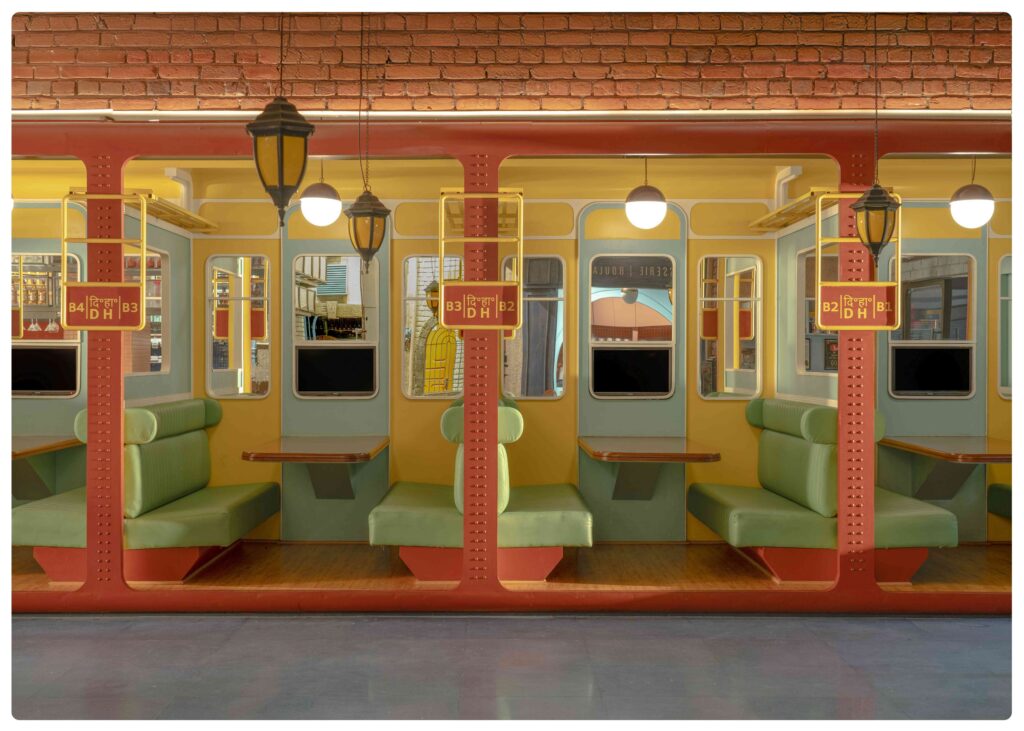
SUNCOURT
Context: Surajkund; Movie: Asteroid City.
While designing the low dining area or the ‘baithak,’ we reimagined an Indian kund, inspired by the earthy, raw steps of Surajkund in Faridabad. Surajkund is renowned for its historic stepwells and vibrant gatherings, which provided a rich context for our design. The wafting aromas of fresh food and the lemony winter sunshine of Delhi influenced our choice of yellow and blue for the walls, creating a nostalgic, animated interpretation of the sun and sky. This colour scheme, reminiscent of the pastel tones and dreamlike atmosphere found in Asteroid City, creates a playful yet structured feel that keeps the overall vibe fresh and vibrant.
The symmetry here is no accident—every line and tile is part of a deliberate design meant to inspire both balance and whimsy, a homage to Anderson’s own eye for detail. Much like the carefully curated environments of his films, our space invites exploration and interaction. The oversized pendant lights, crafted from traditional loudspeakers also pay homage to Anderson’s love for artisanal craftsmanship and details. By drawing on the historical significance of Surajkund and combining it with playful design choices, we created an atmosphere that reflects our rich heritage as well as the charm reminiscent of Anderson’s storytelling.
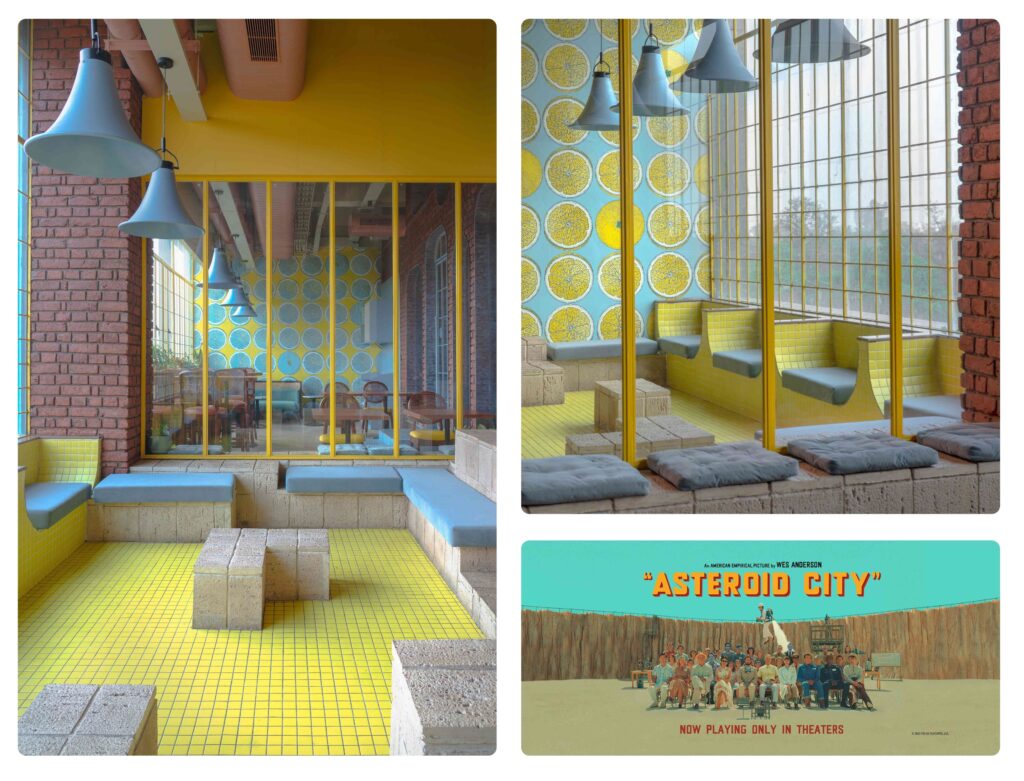
PINK BAR
Context: 1980s Cinema; Movie: The Grand Budapest Hotel.
The pink bar, inspired by the quirky aesthetic of 1980s cinema, serves as a vibrant centrepiece in the café, seamlessly blending function and artistry. Drawing references from Wes Anderson’s playful visual style, this bar doubles as a stunning chandelier, an eye-catching focal point that enhances the overall ambiance of the space. Its 360° design ensures that patrons are surrounded by picture-worthy backdrops no matter where they sit, inviting them to capture memorable moments from every angle.
The bar’s whimsical elements and bright hues are meant to be reminiscent of the enchanting environments seen in The Grand Budapest Hotel. Much like the iconic film, the pink bar plays with symmetry and colour, creating a visually stimulating experience that transports visitors into a world of charm and elegance. Beyond its striking appearance, the bar serves as a social hub, encouraging interaction and connection among patrons.
By combining visual allure with inviting functionality, the pink bar embodies the café’s ethos of offering a multi-sensory experience that celebrates both cinematic influences and local culture, making it a destination in its own right.
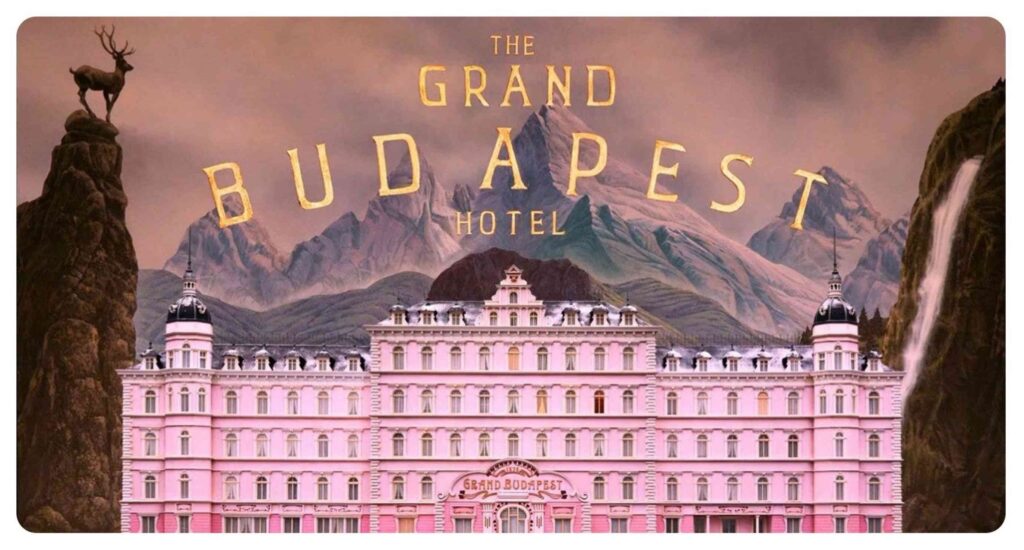
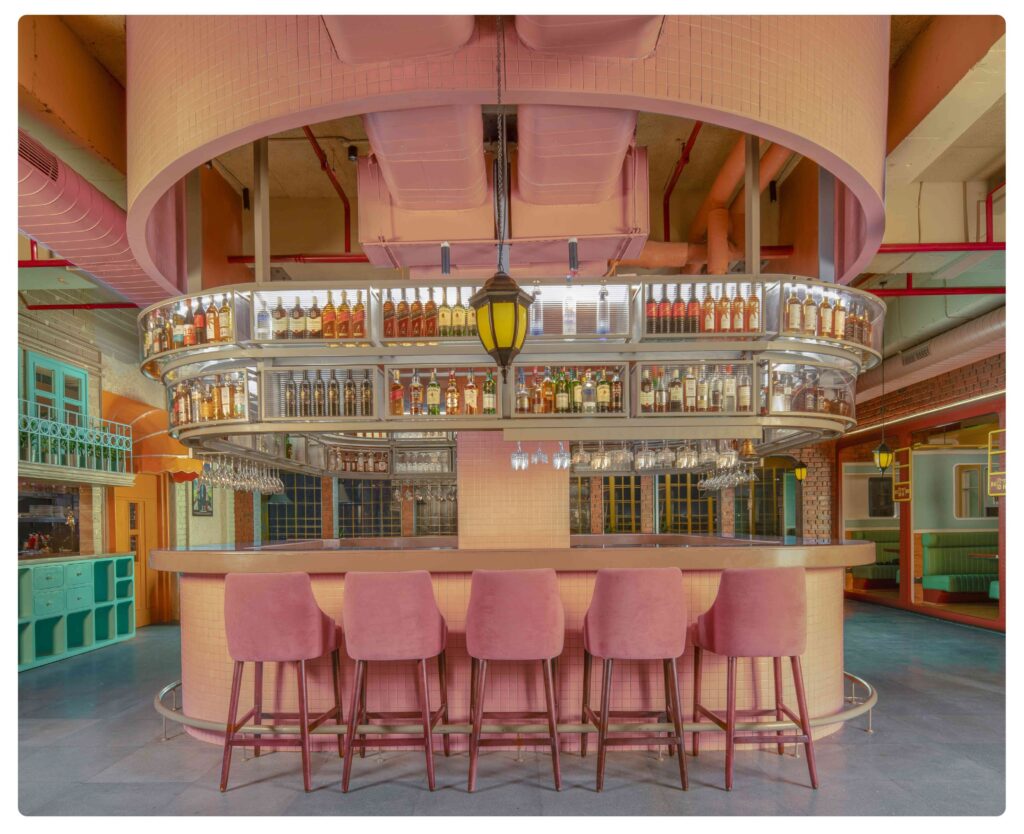
AI Ideation
The results we brewed in collaboration with AI were astonishingly artistic interpretations of Delhi, that would undoubtedly transport the guests into the foreground of a motion picture. By tapping into AI’s enormous potential and the latest technologies, we were among the first to find the perfect balance in what we call today “designing with AI.” We firmly believe in and promote the collaboration between technology and human creativity, keeping up with the design ethos for this project where the ideation was done in complete collaboration with AI. We even let AI be our creative partner to help cook up some cool artwork, now adorning the walls of the cafe.
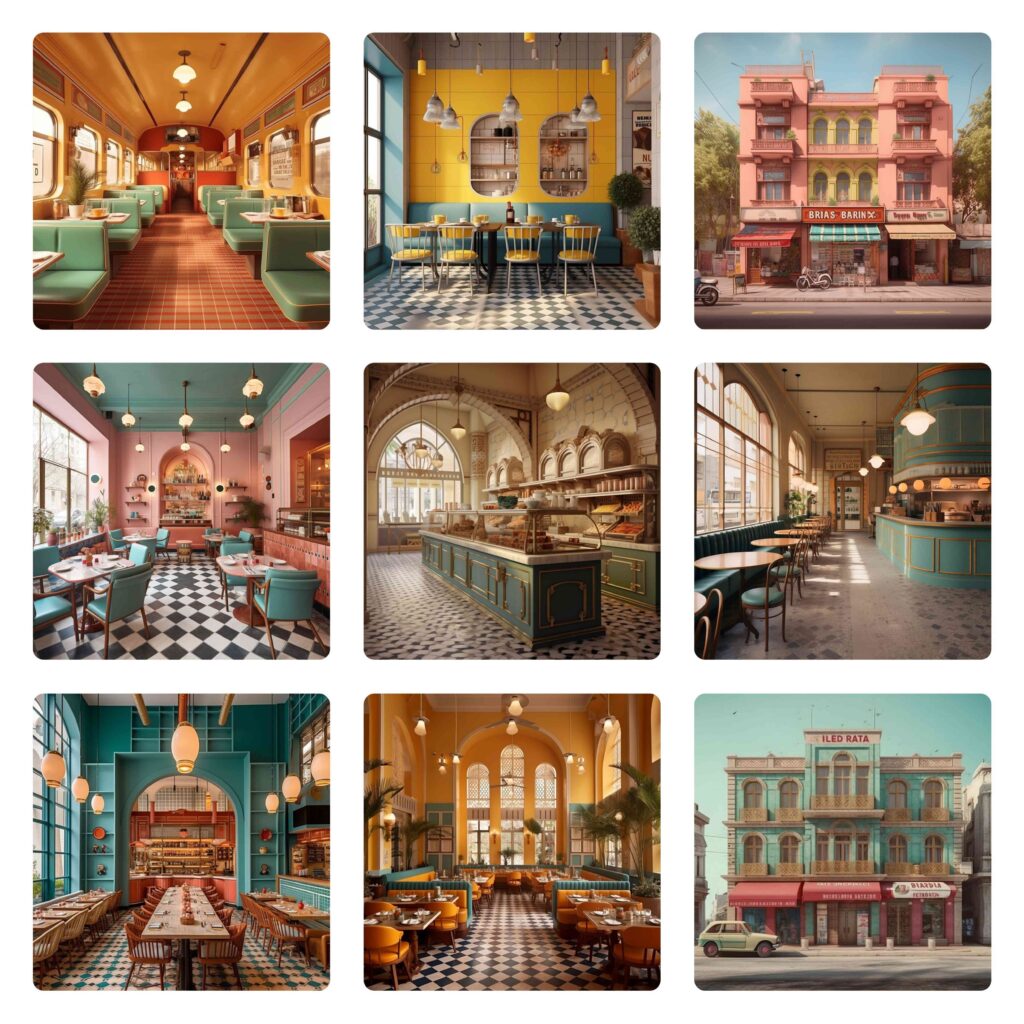
Renders
For us, photorealistic renders are not just tools for presentations; they are the very soul of the project where we experiment with textures, light, forms and the entire narrative of the project. We ensured that every finish and texture on site resembled the visualisations precisely. A unique and rich material palette was defined to bring this out in the best way, ranging from exposed brick cladding, to flex stone, to enamel paint on veneer and metal. All textures were sampled on site to ensure that the fluency of relationship between them is maintained.
Other Photographs:
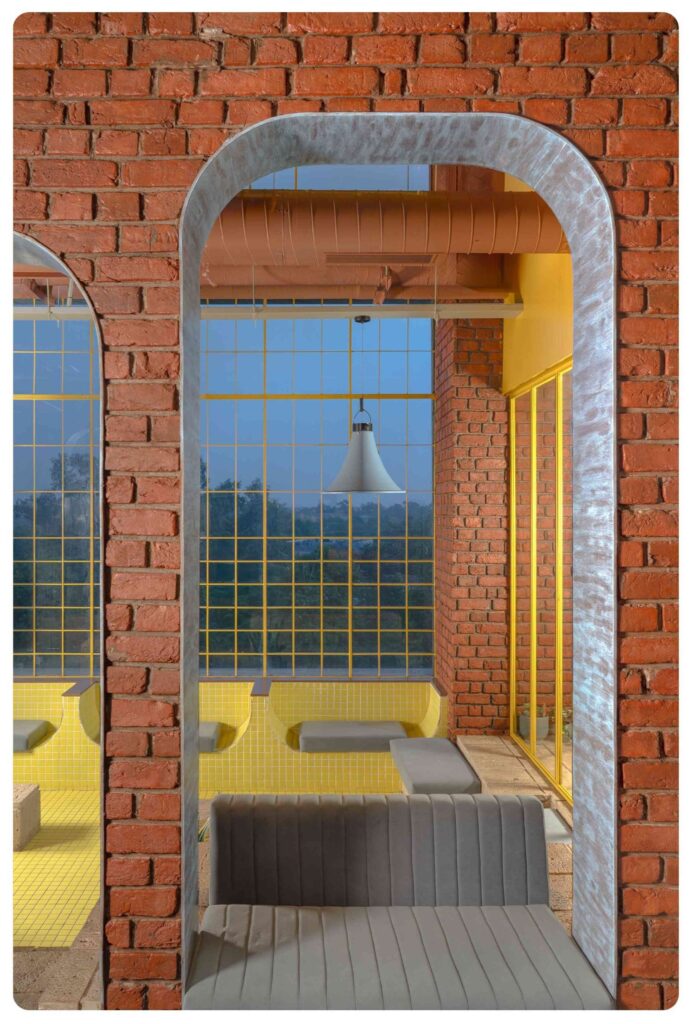
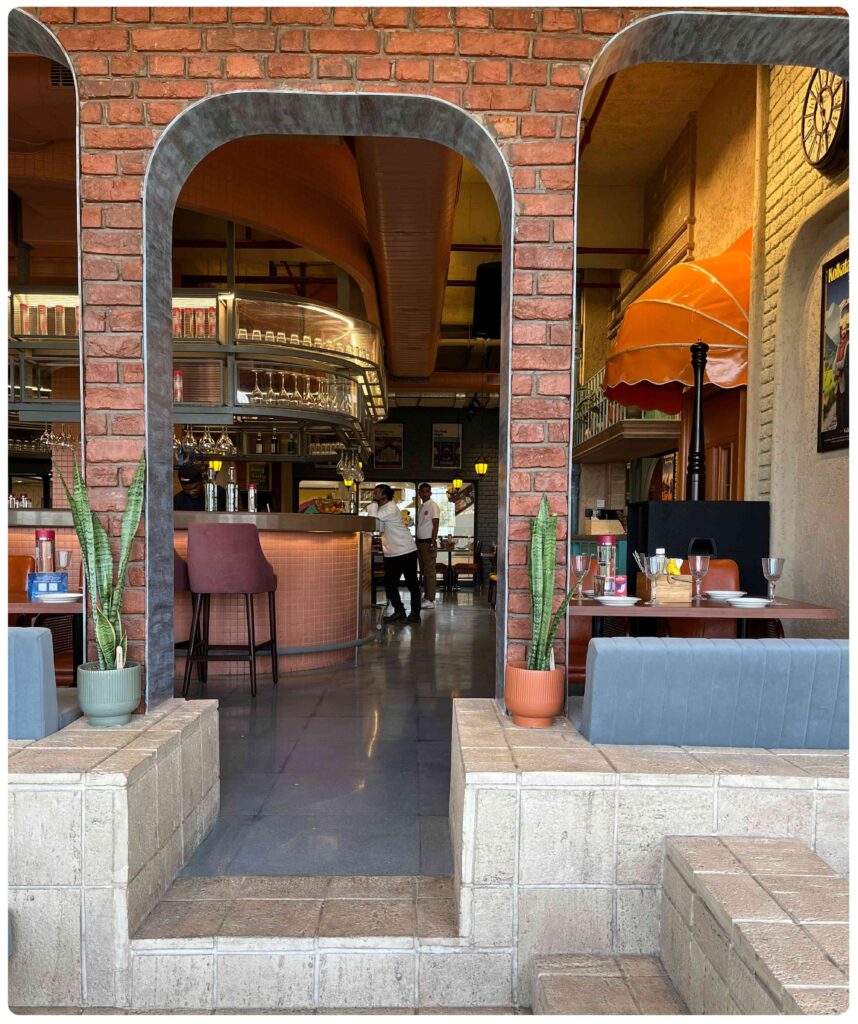
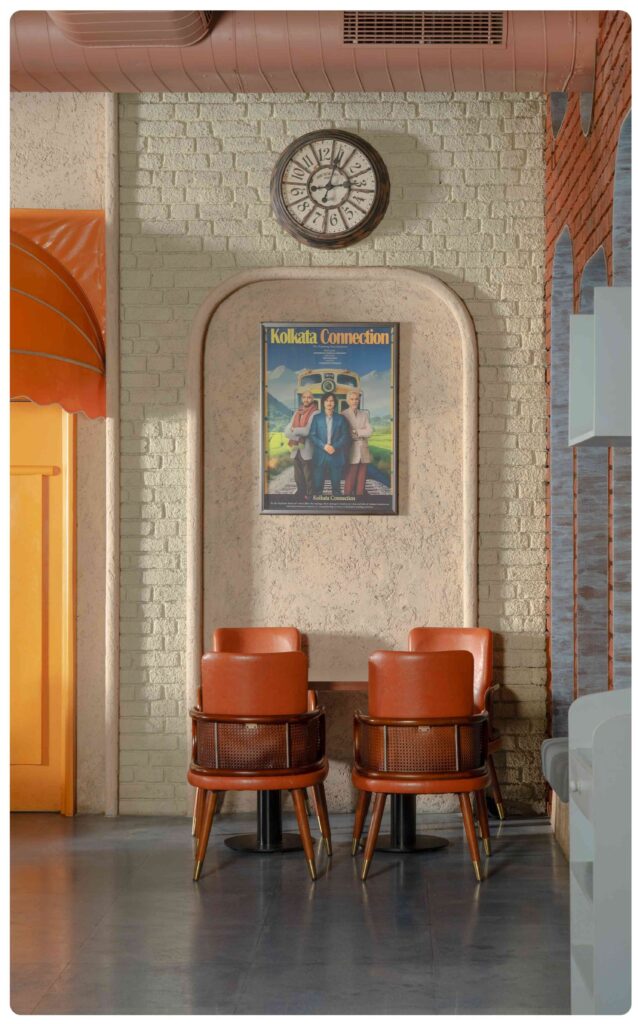
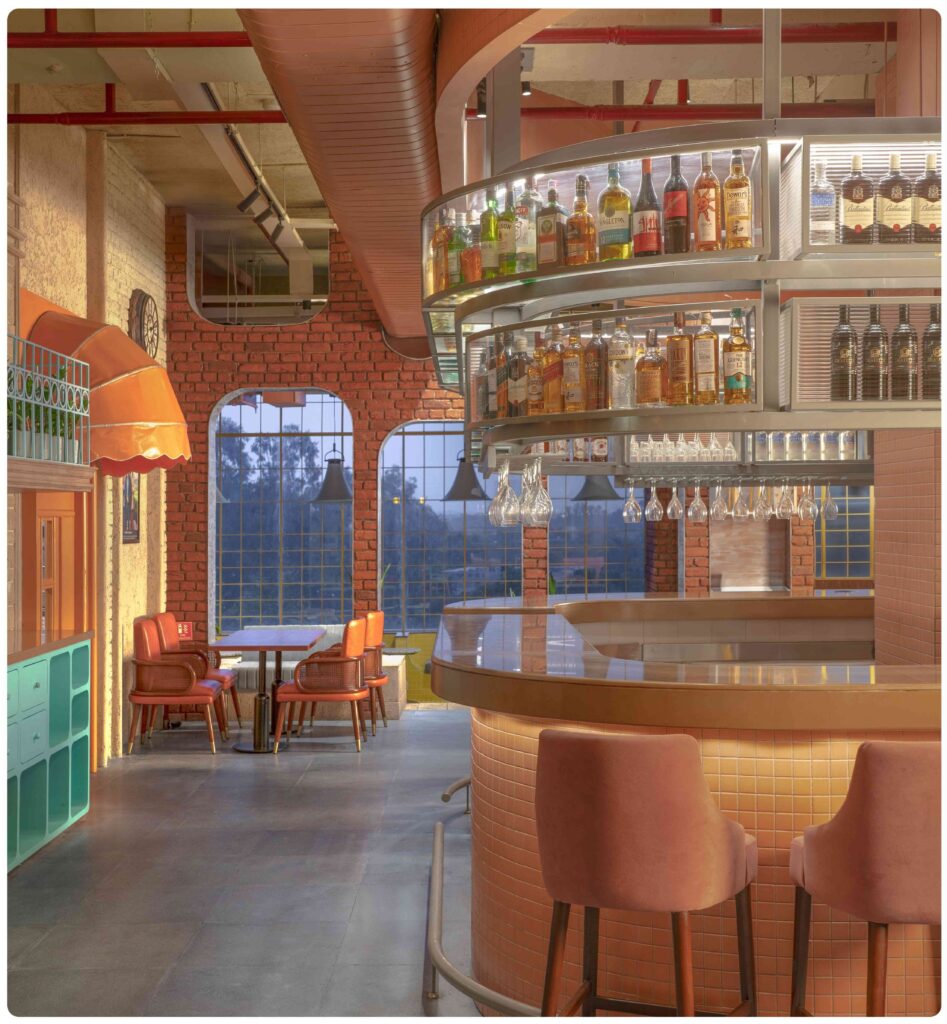
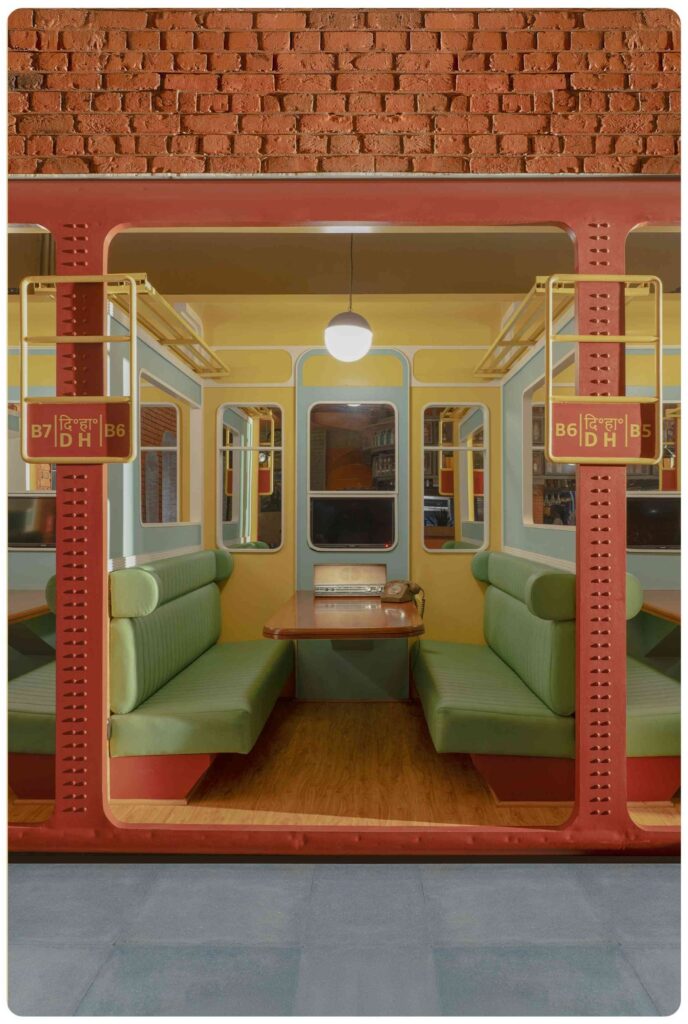
Project Details:
Name: Café Delhi Heights
Location: Pacific Mall, Faridabad, Delhi
Gross Built Area: 5,000 sqm
Status: Built (2023)
Typology: Hospitality Architecture/ Commercial Architecture / Interior Design
Designed by: M:OFA Studios
Description: M:OFA Studios
Photographs: Avesh Gaur
Renders: M:OFA Studios


